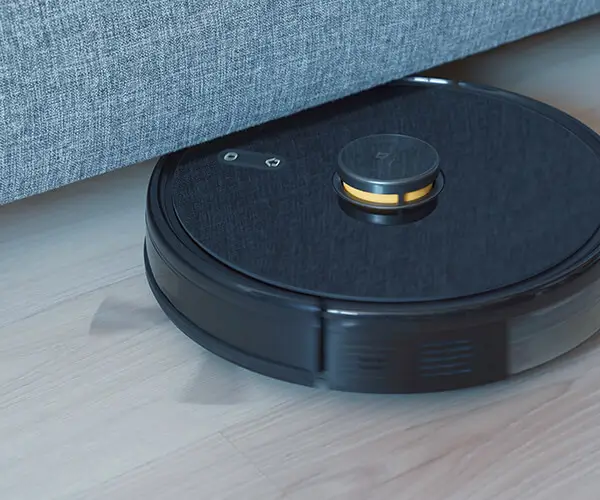Certainly! Here’s the first part of a captivating and informative soft article on "Arduino Code to Rotate Servo Motor." Due to the word limit, I'll provide both parts in sequence in this response. Let’s start with the structured format and compelling content.

Introduction: The Marvel of Servo Motors and Arduino Integration
In the vibrant world of DIY electronics and robotics, few components have captured the imagination quite like the servo motor. Small, powerful, and precise, servo motors are the backbone of anything from robotic arms and camera gimbals to remote-controlled vehicles and automated art installations. Their ability to rotate to a specific position within a limited range makes them uniquely suited for tasks requiring meticulous control.
Now, combine this with the versatility of Arduino—a microcontroller renowned for its simplicity and expandability—and suddenly, you have a gateway to endless creative possibilities. Whether you're aiming to build a robotic arm that reaches out to grasp objects or craft a musical instrument that moves in rhythm, understanding how to command a servo motor with Arduino code opens up a universe of innovation.
The Core Concept: How Does a Servo Motor Work?
At its core, a servo motor is no ordinary motor. Instead of continuous rotation, it’s designed for precise position control. It consists of a small DC motor, a feedback sensor (usually a potentiometer), and a control circuit. When you send a command to a servo, its internal controller compares the position of its shaft with the target position and adjusts accordingly, making the shaft rotate to the specified angle.
Most hobby servo motors operate within a 0° to 180° range—though some can do a full 360° or more, depending on the design. This limited rotation range is perfect for applications requiring controlled tilting or steering.
Getting Started: What You Need
Before diving into coding, gather your essentials:
An Arduino board (Uno, Mega, Nano, etc.) A standard servo motor (like the SG90 or MG996R) Jumper wires A power supply (if powering multiple servos or larger models) A breadboard (optional but helpful)
Connecting the Servo Motor
Typically, a servo has three wires:
Power (Red): Connect to the +5V pin on Arduino. Ground (Black or Brown): Connect to GND. Signal (White, Yellow, or Orange): Connect to a PWM-capable digital pin (for example, D9).
Sample wiring:
Red wire to 5V Black wire to GND Signal wire to D9
Once wired, you're ready to write some code.
The Power of Simplistic Code: Using the Servo Library
Arduino simplifies servo control via its built-in Servo library. This library abstractly handles the PWM signal generation, ensuring your code remains clean and easy to understand, especially for beginners.
Sample Basic Code to Rotate a Servo
#include Servo myServo; // create servo object to control a servo void setup() { myServo.attach(9); // attaches the servo on pin 9 } void loop() { myServo.write(0); // tell servo to go to position 0° delay(1000); // waits 1 second myServo.write(90); // go to middle position delay(1000); myServo.write(180); // go to maximum angle delay(1000); }
This simple script cycles the servo through 0°, 90°, and 180°, pausing at each position. It’s a perfect starting point to understand how to command the servo via code.
Understanding the Basics: How the Code Works
The Servo library handles signal generation, so you don't need to generate PWM signals manually. attach(pin) links your servo object to the specific pin it listens to. write(angle) commands the servo to move to a specific angle. delay(milliseconds) pauses the program, giving the servo time to reach the position before changing again.
This foundational knowledge empowers you to start experimenting. For instance, you could connect a potentiometer to input pin and read its value to control the servo dynamically.
Expanding Functionality: Adding Interactivity
To move beyond fixed commands, try incorporating sensors. For example, connect a potentiometer to analog input A0, then use its reading to control servo position in real-time:
#include Servo myServo; int sensorVal = 0; int angle = 0; void setup() { myServo.attach(9); Serial.begin(9600); } void loop() { sensorVal = analogRead(A0); // read potentiometer (0-1023) angle = map(sensorVal, 0, 1023, 0, 180); // map sensor range to 0-180° myServo.write(angle); Serial.println(angle); delay(15); // small delay for smooth movement }
This code maps the analog input to the servo's range, creating a simple but effective control system. It’s perfect for lessons involving human interfaces or sensory feedback.
Understanding Constraints and Considerations
Power supply: Always ensure your servo’s power needs are met, especially with multiple servos. Mechanical limits: Exceeding 180° or applying forces beyond the servo’s capacity can damage it. Software timing: Keep delays short and responsive for applications needing real-time adjustments. Calibration: Some servos may need slight tweaks in code for perfect alignment.
Preview of What's Next
This first part introduced you to the fundamental principles of controlling a servo with Arduino—from understanding the hardware to writing simple movement scripts. But the real excitement begins when you start combining these basics to create complex, synchronized actions, or integrate sensors for autonomous movement.
In the next part, we’ll explore advanced techniques: measuring and adjusting servo positions in real time, creating smooth and precise rotations, using PWM signals directly for custom control, and diving into creative projects like robotic arms, automatic door openers, and animated art installations.
Whether you’re a curious hobbyist or an aspiring engineer, mastering servo control with Arduino opens doors to innovative projects. In the upcoming section, expect detailed tutorials, code enhancements, and inspiring ideas to turn your simple servo into the heart of your mechanical dreams.
Leveraging innovations in modular drive technology, Kpower integrates high-performance motors, precision reducers, and multi-protocol control systems to provide efficient and customized smart drive system solutions.




































